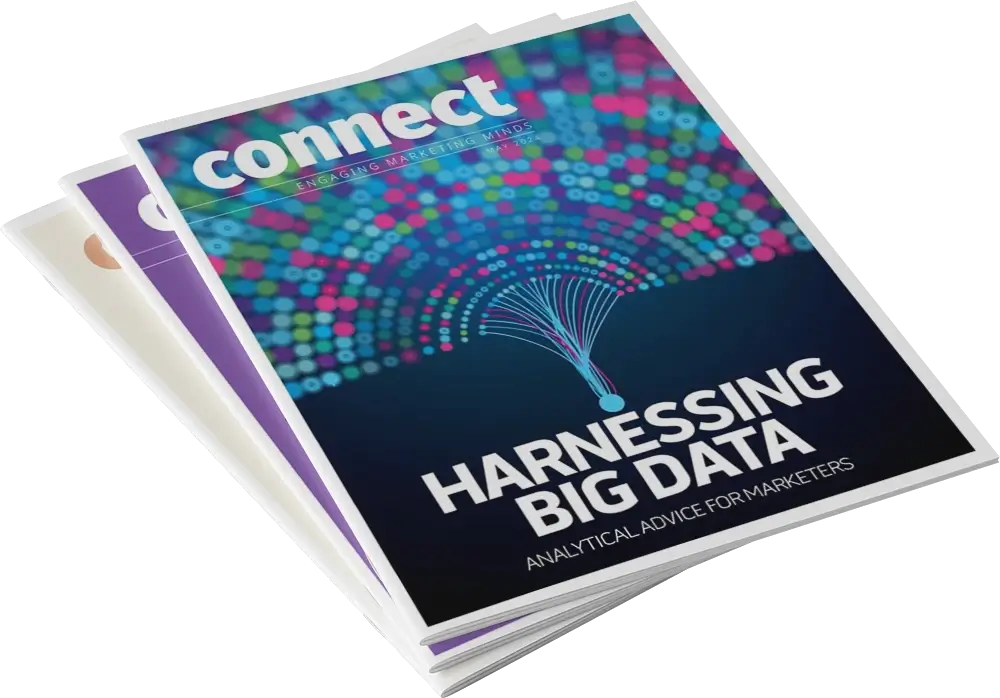In helping bring the software platform Nylas’ new brand to life, James Weiss and his Big Drop team set out to focus on the true value of Nylas’ power connectivity and personalization through APIs. The approach would lean into a slate of old-fashioned marketing strategies. Along with creating a more aesthetic look and feel, including a new logo, brand identity and visual appeal, Big Drop honed in on the brand’s story by optimizing its content (more engaging content and videos). This made the content more easily digestible and user friendly.
After implementing its informational vision, the Big Drop team strategized lead generation, including creating a user experience that clearly articulated Nylas’ capabilities to audience members and guides users toward conversion. By creating a more humanistic approach when it came to style and messaging, its customers would become more engaged.
“By and large, marketing as a concept doesn’t change, but the methods in which it is facilitated have,” says Weiss, Managing Director of the award-winning, full service digital agency. “Adhering to brand values, providing consistent messaging, knowing your target audience and seeking opportunities to innovate are principles every company should consider to bolster their marketing efforts. On the digital side, we are strong proponents of sound UX and content strategies married alongside a properly-branded and intuitive interface that responds accordingly and resonates on an emotional level with key demographics.”
To make any marketing plan successful, especially ones that integrate traditional and digital marketing techniques, Weiss believes marketers must follow a fairly straightforward blueprint for success, including:
- Resonating with your audience via target demographics;
- Leveraging your brand in the same way to ensure consistency (resurrecting old content while new content is being created and distributed);
- Utilizing all available and appropriate channels together, including leaning into digital to promote print and using any OOH campaign components to drive traffic to digital presences;
- Analyzing all data from both campaign arenas to track performance and optimize campaign efforts (this is key to making sure any messaging is landing and landing well).
“One advantage that traditional has over digital is the ability to make physical connections between brand and customer in ways digital simply cannot,” Weiss says. “Avenues like events, experiences and even direct mail all leave different impressions with users than a display ad or sponsored post. Capitalizing on the physical attributes of traditional marketing is much more of a brand play, and when executed correctly with the right strategy to appeal to the right audience, it can have an impact that digital cannot.”
“When traditional methods come unstuck is when they are used exactly as they used to be before digital arrived.”
– Peter Graves, Founder, Peter Graves Growth and Investment
Weiss says one of the easiest ways to measure traditional marketing effectiveness is by analyzing sales data from before and after a campaign’s launch, as well as through foot traffic for retail or experiences. If there is a digital component to a traditional campaign, tracking customer response would be the next best way to see how effective an initiative was. “As with anything, the best indicator of effectiveness is time, but it can be difficult to measure things like brand loyalty and customer lifetime value in shorter increments. But all of these core metrics together have to answer the question, ‘Was there a return on the investment?’ and, if so, ‘How much?’”
One of the exciting challenges the Big Drop team is frequently tasked with is revitalizing a brand identity, which typically involves helping it work in spaces it has not yet explored, or by expanding its usage through an updated collection of pre-designed elements designers can use to create consistent and visually appealing digital products. “Our goal is to provide viable options for a given identity to maintain or ideally improve a brand’s standing in the market,” Weiss says.

Is it real or…
Peter Graves remembers spending time on several experiential campaigns where his teams handed out branded drinks and snacks in transport hubs and retail locations. The banter between the promotional team and the customers, who are almost always delighted to taste free food or drinks, is more than engaging in that the real-time responses cannot be replicated digitally.
Which means the old school approach still works? “The human interaction with a real-person brand representative, promotional person, shopkeeper, musician or celebrity is still some steps ahead of what can be achieved digitally, and one of the most powerful drivers of loyalty,” says Graves, who today runs Peter Graves Growth and Investment. “It is likely that earlier in their journey, the customer would have interacted digitally with the brand. That interaction often brings them to the real-life experience, which is where the relationship with the brand is really cemented.”
Ask Graves and he admits that traditional marketing methods still hold true and, in most cases, can add value hand-in-hand with digital. For example, getting your positioning just right—the 4 Ps of marketing: product, price, place, promotion, still are extremely valid. Even traditional channels like display, print and TV advertising, direct mail, have a place and work well alongside the digital channels. “It is just that we have many more options now.”
“As with anything, the best indicator of effectiveness is time, but it can be difficult to measure things like brand loyalty and customer lifetime value in shorter increments.”
– James Weiss, Managing Director, Big Drop
Today, the biggest new arrivals with digital are interaction, amplification, the arrival of inbound marketing, global reach, automation, personalization and measurement. When used properly, many of these enable formidable ROI. The last—measurement—even makes it possible to understand what works and what doesn’t.
“Some traditional businesses have literally wilted while challengers took the entire market,” Graves says. “In some cases, this is because traditional marketers don’t trust their audience to engage with the brand. They are afraid customers will pollute the messaging with inconvenient real-life interactions. The audience leaves for brands that actually conduct a relationship with them, over and above just receiving their money, while older perfectly-manicured brands have wilted.”
To effectively integrate traditional marketing techniques with digital strategies, Graves believes brands must start with the traditional principles and processes. The strategy works when you understand your audience, develop strong positioning and value proposition, and develop a powerful brand. “When traditional methods come unstuck is when they are used exactly as they used to be before digital arrived.”
In a landscape dominated by digital innovation, the revival of traditional marketing methods serves as a powerful reminder of the enduring value of personal connection and authenticity. By blending (and adhering to) these tried-and-true strategies with modern insights, brands are not only honoring the past, but paving the way for a more balanced and effective marketing future.

